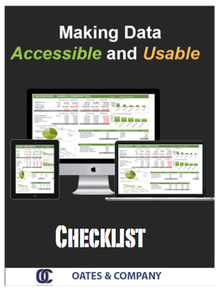The way you manage the inventory process flow in your warehouse is critical. Even if you have the best product on the market, you won’t be in business very long if your warehouse misplaces or loses merchandise. Making sure that your inventory flows smoothly in and out the door means managing your warehouse with a few best practices in mind:
Define What You Have
 The person with the most knowledge of your inventory and warehouse needs to go into the warehouse and define your inventory system. How do you receive, count, record, and ship every piece of inventory? Watch the warehouse over time and determine if those methods need tweaking or even completely changing.
The person with the most knowledge of your inventory and warehouse needs to go into the warehouse and define your inventory system. How do you receive, count, record, and ship every piece of inventory? Watch the warehouse over time and determine if those methods need tweaking or even completely changing.
A popular way to help with inventory management is to make a flow chart. Designing a flow chart for each part of the inventory process shows you – and your employees – exactly how your inventory flow works. Also, if you plan on getting inventory management software, having a flow chart can help you make a decision about which software to choose.
Understand the Main Points
The three main functions in any inventory processing plan are receiving, moving, and shipping. You need to break these down and answer questions about each category in order to create a reasonable inventory management process flow.
Receiving
The questions you need to ask yourself regarding your receiving process include questions about barcodes and purchase orders. For example, do you want to practice blind receiving or reception by purchase order alone? It is possible that a combination of both would work better for you. Do you want a barcode to match the product for software purposes? Do you have a holding area, and does it need to be involved in the inventory management process? Are there a lot of serial numbers to track? Do you receive by the case then ship individual pieces?
Moving
Moving refers to any time a product is touched by an employee or moved in any way. This process can get complicated if employees aren’t correctly tracking the movement – they forget to enter the movement into the system, for example, or they enter the information about where it was moved incorrectly. Questions to ask, therefore, include your employees. Realistically, how many people need to be touching/moving the product? Who needs to know when the product moves? How does the person who moved the product indicate that to your other employees?
Shipping
Shipping is the last step in the warehouse. It is the moment when the product leaves the lot, bound for a new facility or a customer. Any goods that are shipped are considered goods that are handled externally, whereas products that are consumed internally – by employees – should be differentiated. How do you do so? Does that inventory have its own process flow or a separate one? If you don’t like the system you have, to what lengths are you willing to go to change it?
For external inventory, how do you scan them as they leave? By pallet? By customer? By piece? Do you check outgoing shipments for accuracy? How do you handle mistakes or breakage by shipping companies?
Inventory is important. Having good control over it is important. Having a system to manage your inventory process flow can only increase your bottom line.
Contact Oates & Company and get more information today.



